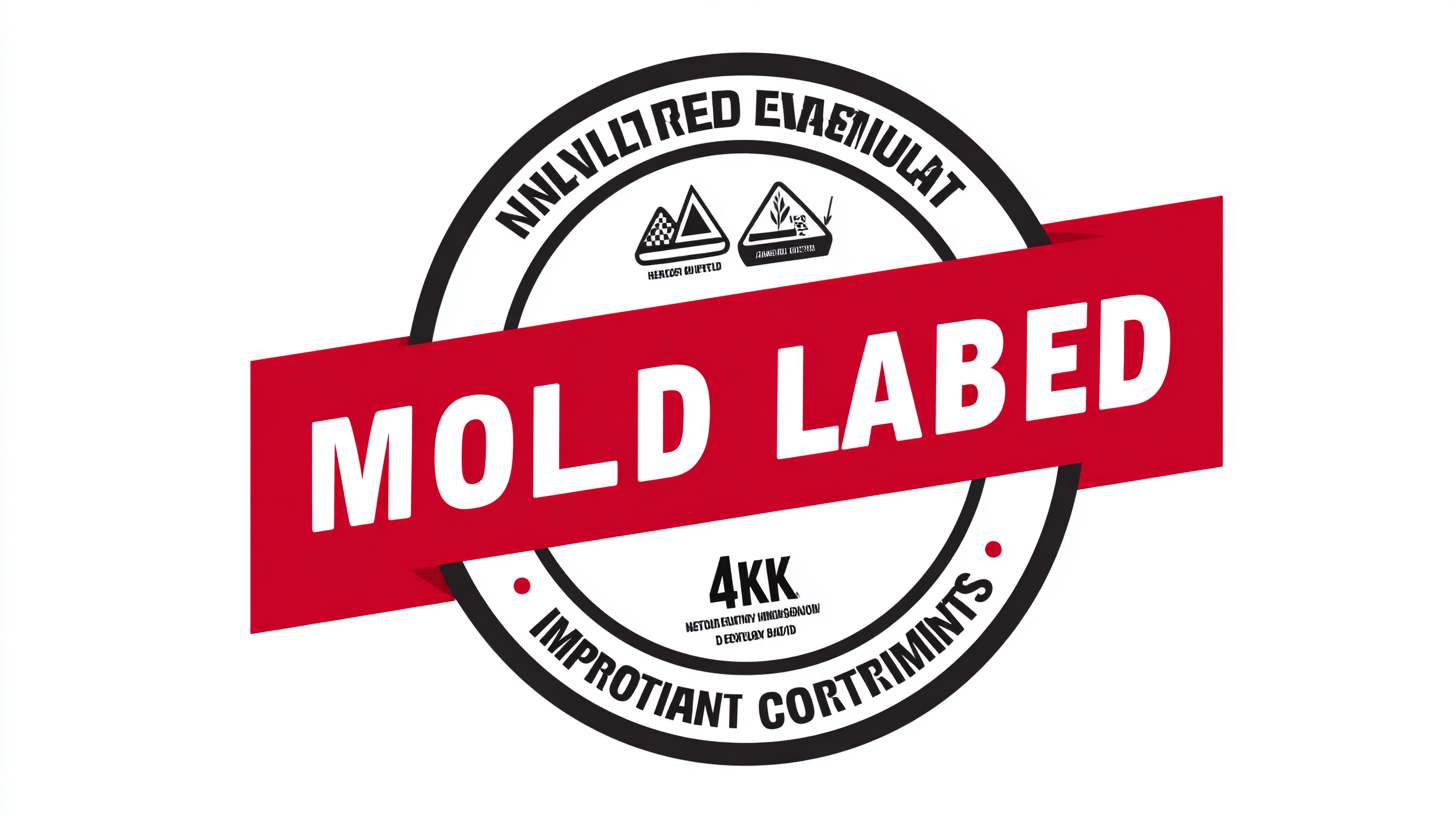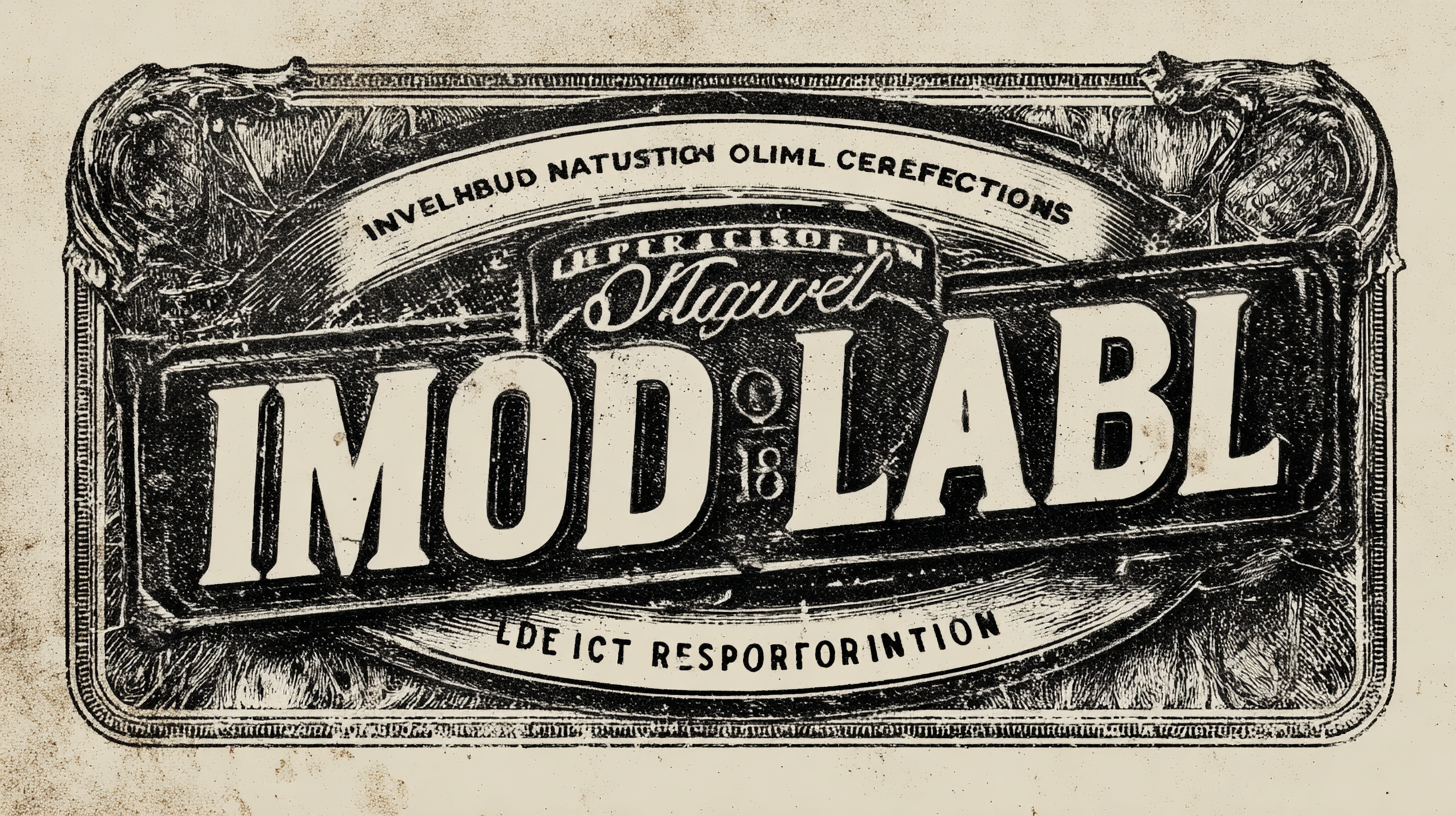Navigating Best In Mold Label Import Export Certification Requirements and Processes
In today's rapidly evolving manufacturing landscape, the demand for high-quality packaging solutions, particularly in the realm of "In Mold Label" (IML) technology, is on the rise. According to Smithers Pira's recent report, the global IML market is expected to grow at a CAGR of 8.4% from 2021 to 2026, driven by industries such as food and beverage, personal care, and pharmaceuticals. As businesses seek to enhance their branding while ensuring compliance with stringent international regulations, navigating the import and export certification requirements related to IML can be daunting.
Understanding these processes is crucial not only for legal compliance but also for leveraging IML's potential benefits, such as reduced waste and improved aesthetic appeal. This blog aims to demystify the certification requirements and processes involved in IML, enabling stakeholders to make informed decisions in an increasingly complex global marketplace.
Understanding Mold Labeling Standards Across Global Markets
Understanding mold labeling standards across global markets is critical for manufacturers and importers alike. As industries grow increasingly globalized, the importance of adhering to local regulations cannot be overstated. Each country has its unique requirements regarding mold labeling, which may include specific language, format, and even the presence of particular certifications. For instance, in the European Union, products must comply with strict guidelines set forth by the REACH regulation, ensuring that consumers are adequately informed about the safety of materials regarding mold.
Moreover, understanding these standards not only helps in regulatory compliance but also fosters consumer trust. For businesses looking to export their products, a clear understanding of different markets' mold labeling requirements can significantly ease entry barriers. In the United States, regulations by the Environmental Protection Agency (EPA) dictate how mold-related information should be disclosed on product labels, making it crucial for companies to stay informed about these competencies. By investing time and resources into understanding and implementing the correct labeling standards, businesses can position themselves as responsible players in the global market, enhancing their competitiveness and credibility.

Key Certification Bodies for Importing and Exporting Mold Labels
When navigating the import and export landscape for mold labels, it’s crucial to understand the key certification bodies that govern these processes. Organizations such as the International Organization for Standardization (ISO) and American National Standards Institute (ANSI) play pivotal roles in setting the benchmarks for quality and safety. According to a recent report by the National Institute of Standards and Technology, compliance with these certification requirements can significantly reduce product recalls and enhance consumer trust, with companies reporting a 30% decrease in issues post-certification.
To ensure that your mold labels meet the necessary standards, it’s advisable to consult with respective certification bodies like Underwriters Laboratories (UL) and the Occupational Safety and Health Administration (OSHA). These entities not only provide guidance on requirements but also conduct evaluations to certify compliance.
**Tips:** Always keep updated with the changes in certification regulations, as they can shift rapidly. Engaging with industry experts or taking part in workshops can provide insights into best practices for certification. Additionally, consider establishing a quality management system that aligns with international standards to streamline your certification process and improve overall operational efficiency.

Step-by-Step Guide to Compliance with Mold Label Regulations
Navigating mold label certification requirements can be a daunting task for importers and exporters alike. To ensure compliance, it is essential to understand the specific regulations that apply to mold labeling in your country and the markets you wish to enter. Begin by researching local regulations, as requirements may vary significantly between jurisdictions. A thorough examination of the labeling standards, including language, hazard communication, and product information, will help lay the groundwork for your compliance strategy.
Once you have a clear understanding of the regulations, the next step is to gather the necessary documentation. This may include materials safety data sheets (MSDS), certification documents from mold testing laboratories, and records of compliance with applicable standards. It's crucial to maintain accurate records, as they will serve as proof of compliance during inspections or audits. After assembling your documentation, submit it to the appropriate certifying body for review and approval. Remember, staying proactive in understanding and adhering to these regulations will not only facilitate smoother trade but also enhance your product’s credibility in the marketplace.
Navigating Best In Mold Label Import Export Certification Requirements and Processes - Step-by-Step Guide to Compliance with Mold Label Regulations
| Regulation/Certification |
Issuing Authority |
Requirements |
Compliance Process |
Estimated Time for Approval |
| Mold Labeling Requirement |
Environmental Protection Agency (EPA) |
Label must contain a clear warning and instructions for safe use |
Submit label for review and address any comments from the EPA |
45-60 days |
| Import Certification |
Customs and Border Protection (CBP) |
Provide documentation proving compliance with mold labels |
File import documents and pay any applicable duties |
10-30 days |
| Export Certification |
Department of Commerce |
Meets international labeling standards and requirements |
Complete the export documentation and compliance certificate |
2-4 weeks |
| Safety Data Sheet (SDS) |
Occupational Safety and Health Administration (OSHA) |
Completion of a comprehensive SDS for each product |
Draft, review and submit SDS for approval |
30-45 days |
Common Challenges in Mold Label Certification and How to Overcome Them
When it comes to mold label certification, businesses often face a variety of challenges that can complicate the import and export processes. One common issue is navigating the differing certification standards across various countries. Each region may have unique requirements that can evolve over time, making it crucial for companies to stay updated. This can lead to misunderstandings or even compliance failures, resulting in delays and additional costs.
To overcome these challenges, it's essential for businesses to establish a thorough understanding of the regulatory landscape. This can involve seeking guidance from industry experts or utilizing certification consultants who specialize in mold labeling requirements. Additionally, creating a centralized database to track certification processes and updates can streamline compliance efforts. Organizations should also invest in staff training, ensuring that team members are equipped with the knowledge to handle these requirements effectively. By proactively addressing these common challenges, businesses can navigate the complexities of mold label certification more efficiently, ultimately facilitating smoother international trade.
Navigating Mold Label Certification Challenges
Strategies for Ensuring Quality in Mold Manufacturing and Exportation
Ensuring quality in mold manufacturing and exportation is essential for maintaining compliance with certification requirements and meeting client expectations. One effective strategy is to implement a comprehensive quality management system that aligns with international standards, such as ISO 9001. This involves regular audits, meticulous documentation of processes, and training personnel on best practices in mold design and production. By adhering to these protocols, manufacturers can significantly reduce defects and enhance the durability and performance of the molds produced.
Another crucial aspect is the selection of high-quality raw materials and reliable suppliers. Establishing long-term relationships with trusted vendors ensures that the materials used in mold production meet the necessary quality standards. Additionally, manufacturers should invest in advanced technologies and machinery for precision in mold creation, which directly contributes to the overall product quality. Incorporating feedback loops from both the production team and end-users can also provide valuable insights, enabling continuous improvement in manufacturing processes and fostering a culture of excellence within the organization.